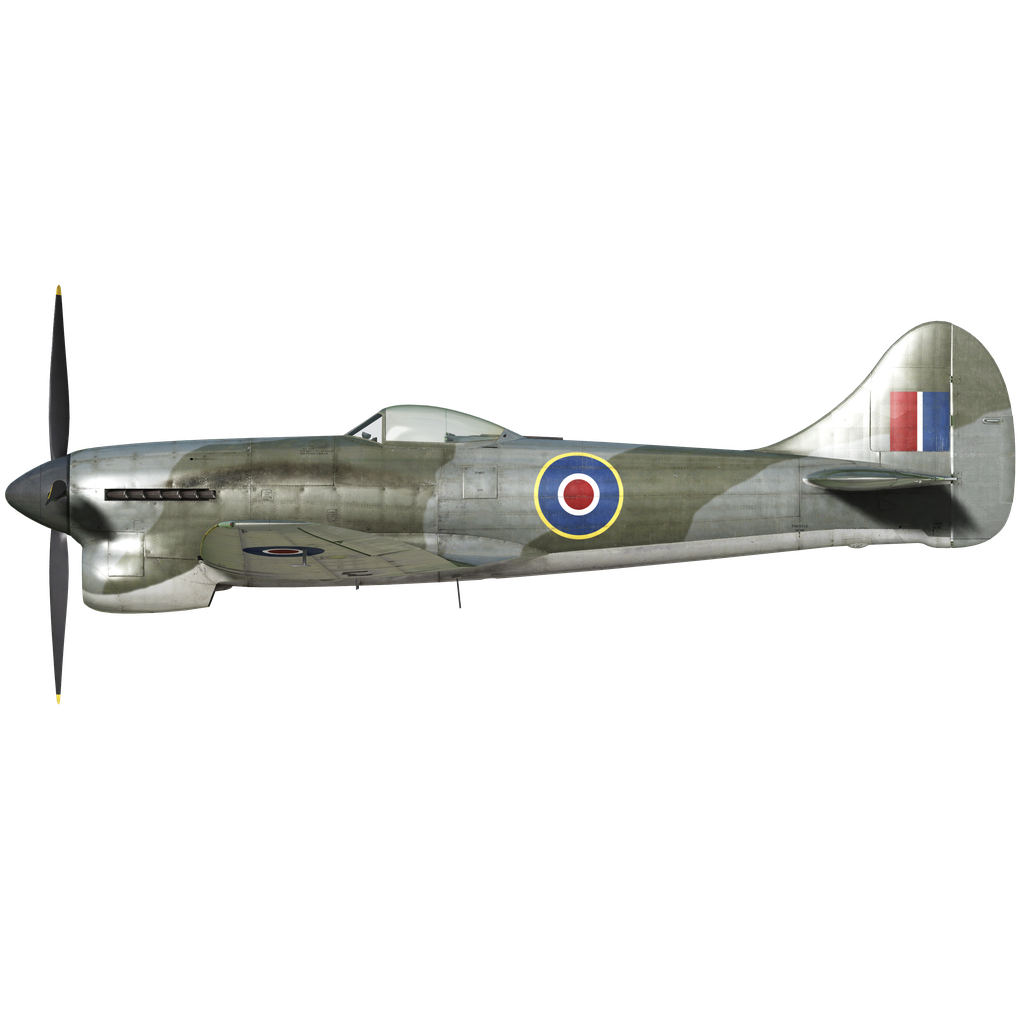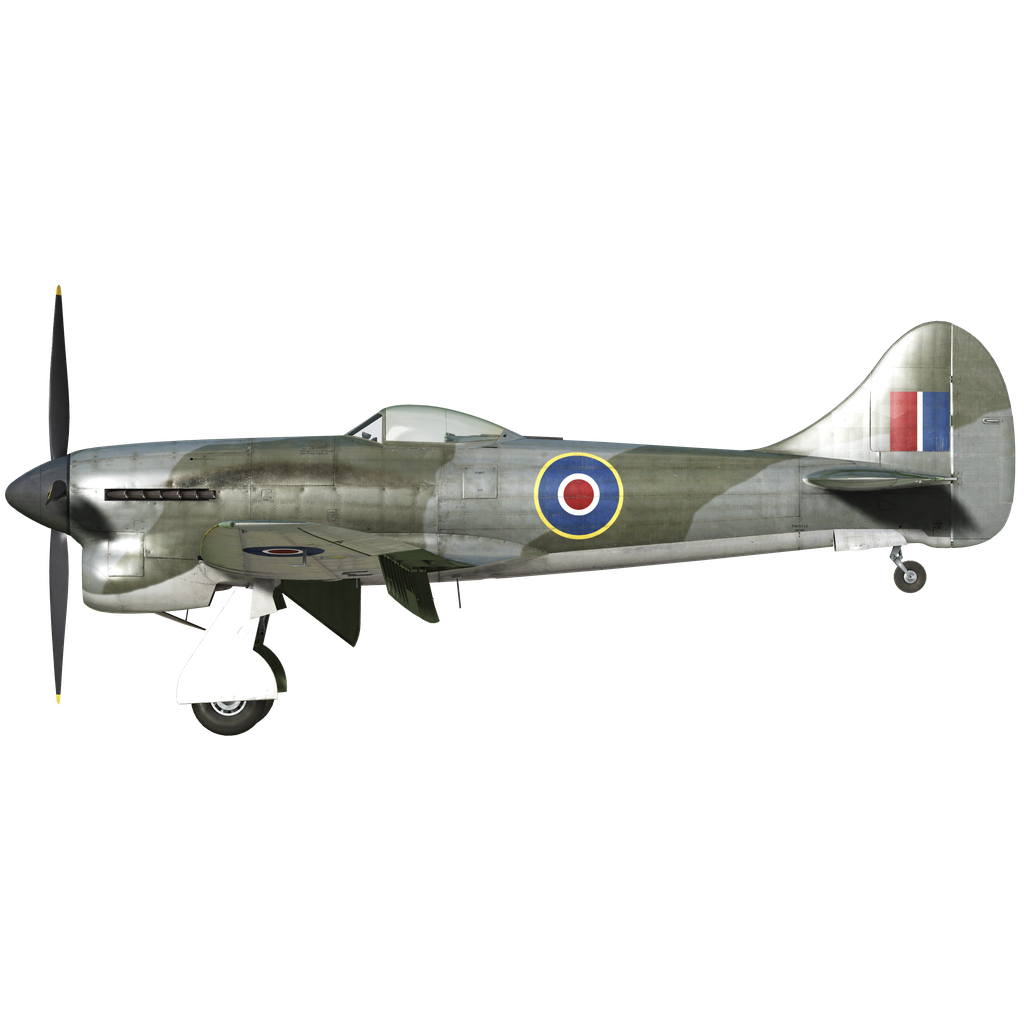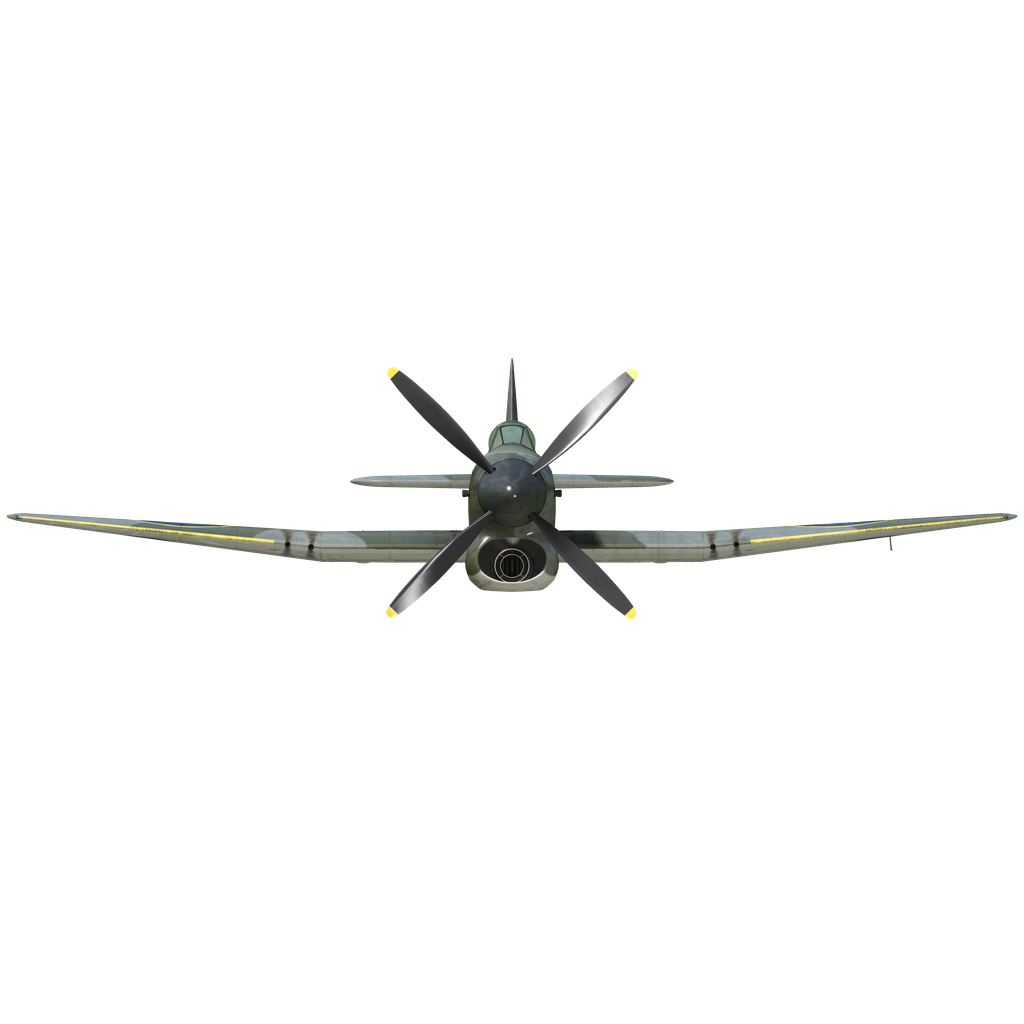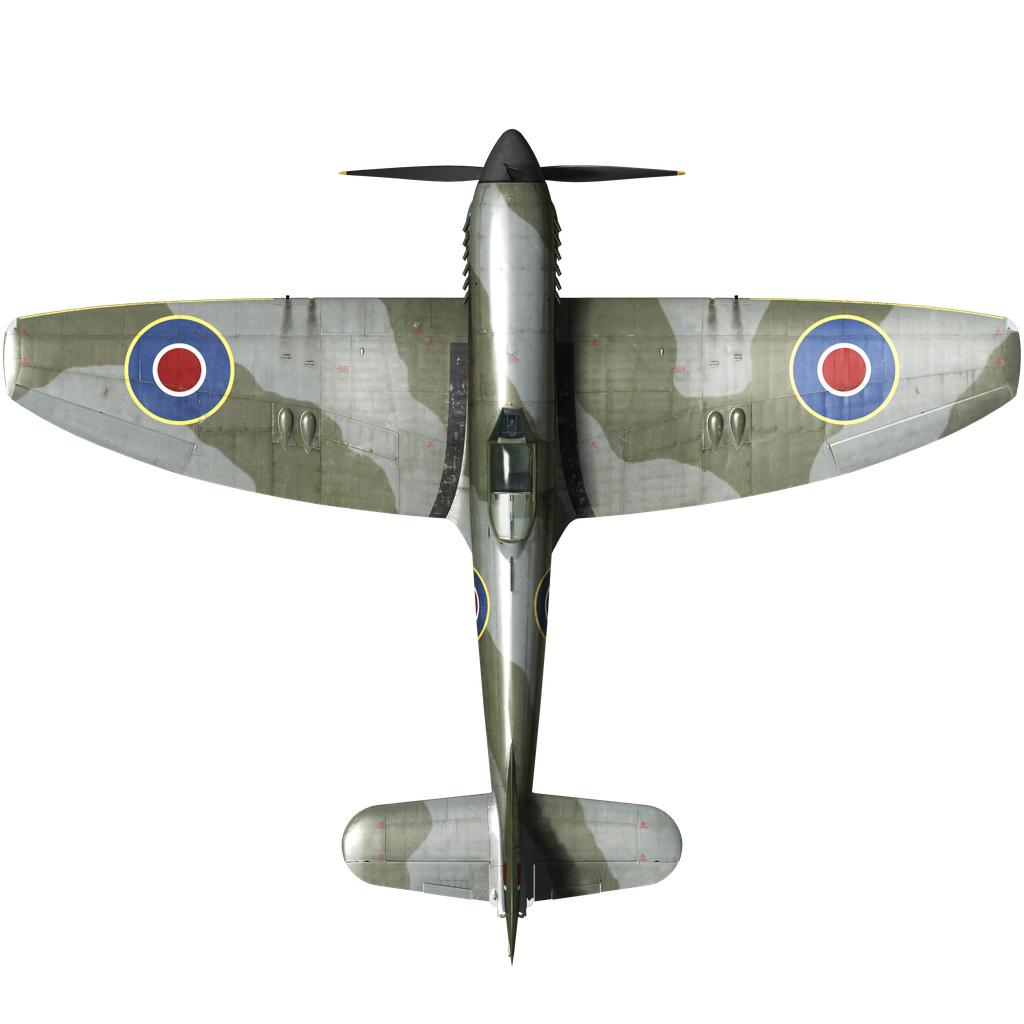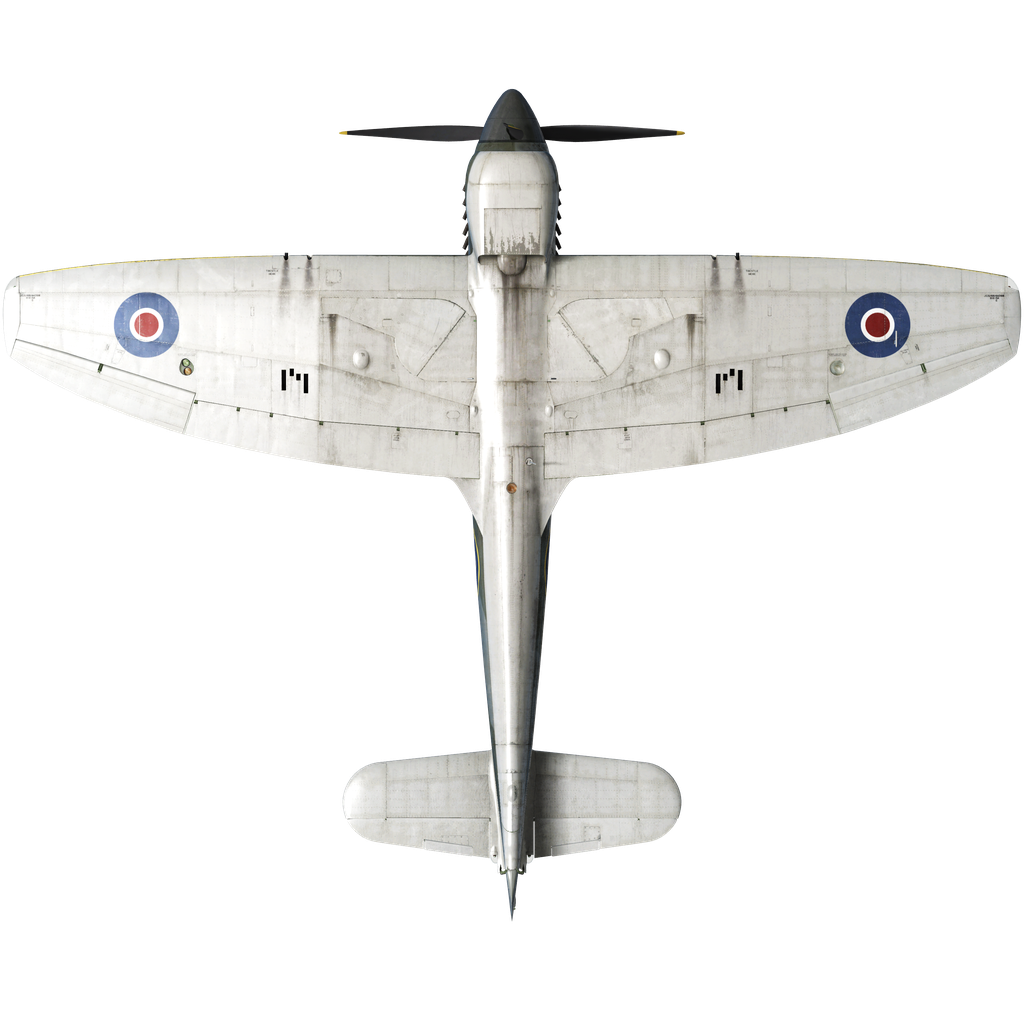The Hawker Tempest V aircraft was a further modification of the Typhoon fighter with improved flight characteristics. The Typhoon was designed as a fighter-interceptor, so the emphasis was on speed and climb rate, with maneuverability as a secondary factor. Its wing profile was very thick to accommodate the weapons mounted there and the large retractable landing gear wheels. In an effort to increase the speed of the aircraft, the designers proposed to replace the wing with a new thin one, like that of the Spitfire. In addition to the wing, many other changes were made to the design, which is why the aircraft received a new name. At the same time, variants with different engines were developed, and the Mk.V variant with the Sabre II engine was initially considered as a backup, but it was this variant that was the first to be brought to flight condition and flew for the first time on September 2, 1942.
The Tempest Mk.V was a metal low-wing monoplane with a twin-strut landing gear and tailwheel. The fuselage consisted of three parts: a forward truss structure integral with the landing gear frame, a semi-monocoque tailplane, and a tailplane with keel and stabilizer attachment points. The teardrop-shaped cockpit canopy provided good visibility. The sliding part of the canopy was made of one piece of transparent plastic and could be jettisoned in case of an emergency, and the windscreen had front and side panels made of armored glass. The tail unit was designed with a fork to improve directional stability.
The Napier Sabre IIA engine developed almost 2200 hp at takeoff and 1735 hp at 5200 m altitude.
The armament consisted of four 20 mm cannons located in the wings: in the second series, their barrels were shortened and did not protrude beyond the wings. Two bombs weighing from 250 to 100 lb or external fuel tanks could be hung under the wings.
The high speed of the Mk.V allowed it to intercept German V-1 flying bombs. Squadrons armed with Tempests shot down some 638 V-1s. By the end of the war, the Tempests had just begun to show their capabilities — at the front, they were used as multi-purpose aircraft: escorting bombers, bombing and strafing ground targets (mainly trains, small river and sea vessels), blockading airfields, and also taking part in raids to gain air superiority. Tempest pilots shot down 11 Me 262 jet fighters.
Used sources:
K. G. Munson "British Aircraft of World War II" 1962
V. Kotelnikov "Fighter "Tempest" magazine "Aviation and Cosmonautics" No. 1 2008
Materials from the site airwar.ru

